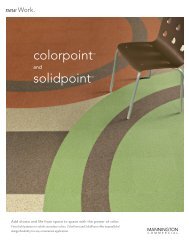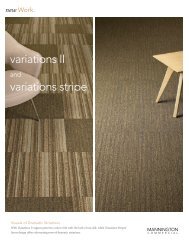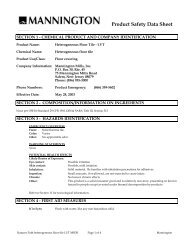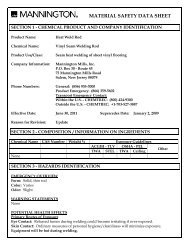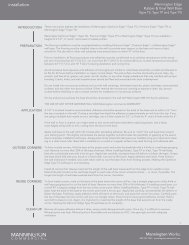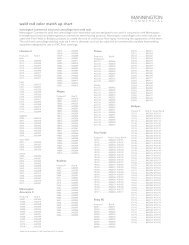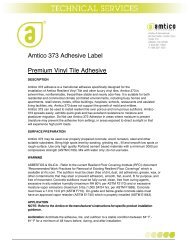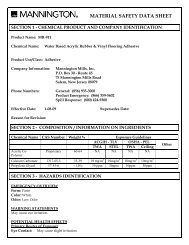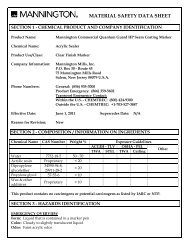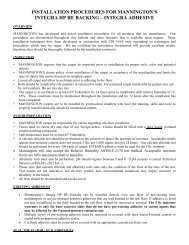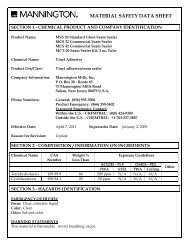V-81 MSDS - Mannington
V-81 MSDS - Mannington
V-81 MSDS - Mannington
Create successful ePaper yourself
Turn your PDF publications into a flip-book with our unique Google optimized e-Paper software.
Inhalation: May be hazardous if inhaled in large amounts. May cause irritation to nose, throat, andlungs.Ingestion: May be toxic if ingested in large amounts. May cause throat irritation, gastrointestinaldiscomfort, griping, diarrhea and vomiting.Chronic: N.A.Other: Effects of Overexposure: May cause irritation to eyes and skin. Repeated or prolongedcontact may cause severe irritation to both eyes and skin.Medical Conditions Aggravated by Exposure: Allergies, skin and respiratory disorders. Productsensitivity.Refer to Section 11 for toxicological information.SECTION 4 - FIRST AID MEASURESIf in Eyes: Flush eyes with water for 15-20 minutes while holding eyelid open Seek medical attentionimmediately if irritation persists.If on Skin: Avoid contact with skin. Remove contaminated clothing. Wash skin thoroughly withsoap and water. If irritation persists, seek immediate medical attention.If Inhaled: Move victim to fresh air. Seek medical attention.If Swallowed: Do not induce vomiting. Seek immediate medical attention.SECTION 5 - FIRE FIGHTING MEASURESFlash Point: > 212 deg FLower Explosive Limit (LEL) %: Not availableUpper Explosive Limit (UEL) %: Not availableAuto-Ignition Temperature: Not availableOSHA Flammability Classification: Not availableHazardous Products of Combustion: Not availableExtinguishing Media: Product will not burn until all water has evaporated. Water spray, carbondioxide, dry chemical, or foam.Unusual Fire and Explosion Hazards: Not knownFire Fighting Equipment: Wear standard fire fighting gear with self-contained breathing apparatus.Miscellaneous Advice: Not available.Refer to Section 10 for additional information.SECTION 6 - ACCIDENTAL RELEASE MEASURESPersonal Precautions: Use appropriate protective equipment.Methods for Clean-up: Contain with inert material (kitty litter, pads, rags, towels) to prevent fromentering soil, water, drains, or sewage systems. Transfer to a suitable container for proper disposal.Refer to Section 13 for disposal information.Refer to Sections 14 and 15 for reportable quantity information.2



